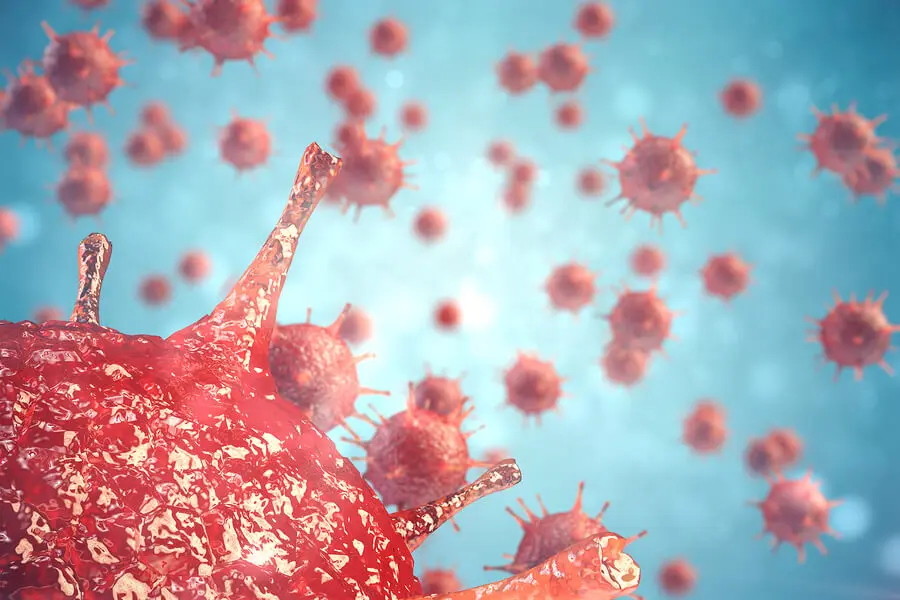WHO Gathers More than 300 Scientists to Try to Prevent Future Pandemics

The press agency of the United Nations (UN) announced in a press release that the World Health Organization (WHO) has convened more than 300 scientists to identify the pathogens that could trigger new pandemics. Is it possible to prevent future pandemics?
These professionals have the task of studying the knowledge they have so far on the more than 25 families of potentially dangerous viruses and bacteria. The project is part of what is known as disease X. It’s the way of designating, as a hypothesis, any pathology that would have global reach in the form of an epidemic.
What is this WHO scientific project about?
According to the document published on Friday, November 18, 2022, the WHO is looking for these scientists to examine the available evidence on 25 different families of viruses and bacteria. The idea is that, based on the findings, they can report new information useful for dealing with future pandemics.
The world-class project aims to update the list of priority pathogens that could cause outbreaks. Within this list, there’s one item that causes considerable concern, but it’s just a name: disease X. This would be any priority pathogen that could cause outbreaks. It would be any priority pathogen requiring rapid investigation because of its degree of unfamiliarity in the midst of an international epidemic.
The shortlist of dangerous pathogens was first published in 2017. That list included coronaviruses. In addition, Ebola, Lassa fever, Middle East respiratory syndrome (MERS) and severe acute respiratory syndrome (SARS), among others, were present.
It is essential to focus on priority pathogens and virus families so that they can be investigated and the necessary countermeasures developed to provide a rapid and effective response to epidemics and pandemics. Without the significant investments in research and development made prior to the COVID-19 pandemic, it would not have been possible to develop safe and effective vaccines in record time

This will be the roadmap followed by more than 300 scientists
The process to update the list of priority pathogens includes scientific and public health criteria. It also considers other criteria related to socioeconomic impact, access, and equity.
Based on these criteria, research and development roadmaps will be developed for microorganisms identified as dangerous in the short term. It will outline current knowledge gaps and areas of research that shouldn’t be overlooked.
Of great value is that, based on the results delivered by the WHO team of scientists, the desired specifications for vaccines, treatments, and diagnostic tests will be decided.
This WHO epidemic R&D (research and development) project will also seek to catalog, summarize and facilitate the clinical trials needed to obtain these products. At the same time, the possibility of extending the activities to ethical and regulatory issues is being considered.
According to the announcement, the list is expected to be published after a thorough review during the first quarter of 2023. The first version will be in English.
The WHO treaty to prevent future pandemics is underway
It has also been announced that a third meeting will be held on December 5 and 7, 2022, to draft and negotiate a WHO convention or other type of international agreement to prepare for, and provide a unified response to, pandemics.
The objective is that this treaty will establish a roadmap and regulations for nations to prepare for, and respond to, future threats. The progress report of this process will be delivered to WHO member states next year. The final document will be submitted for consideration in 2024.
In this regard, the Panel for a Global Public Health Convention (an independent coalition of statesmen and leaders) stated that, to prevent pandemics, the world needs a new Framework Convention on Pandemic Preparedness and Response with binding provisions.
The binding nature seeks to provide authority for the coordination of a global response to pandemics. In turn, mechanisms for verification and unanimous compliance would be proposed.

Read more here: Artificial Intelligence and Disease Diagnosis
Experts say wildlife protection is key
Although the WHO didn’t announce anything regarding the influence of wildlife, experts say its protection is imperative to prevent future pandemics. For example, a recent study found that deforestation in Australia caused a deadly respiratory virus to pass from fruit bats to humans.
According to the paper, contact between people and wild animals, due to the invasion of their natural habitats, is a cause behind several epidemics. Food shortages caused by the El Niño phenomenon in the same area are also considered a trigger.
Experts involved in the discovery stated that flying fox bats are the natural reservoir of the Hendra virus. This pathogen was transferred to horses and then to humans. Hendra virus causes a severe respiratory infection that has reported a mortality rate of 75% in horses and 57% in humans.
These findings demonstrate that the link between the environment, human society, and microorganisms is a close one. A small imbalance can be enough to cause an epidemic.
All cited sources were thoroughly reviewed by our team to ensure their quality, reliability, currency, and validity. The bibliography of this article was considered reliable and of academic or scientific accuracy.
- Eby, P. et al. Pathogen spillover driven by rapid changes in bat ecology. Nature https://doi.org/10.1038/ s41586-022-05506-2 (2022)
- The Case for a Pandemic Prevention Treaty. Panel for a Global Public Health Convention. 2021.
- WHO to identify pathogens that could cause future outbreaks and pandemics. OMS. 2022.
- OMS. La OMS determinará cuáles son los patógenos capaces de causar futuros brotes y pandemias. 2022. Disponible en: https://www.who.int/es/news/item/21-11-2022-who-to-identify-pathogens-that-could-cause-future-outbreaks-and-pandemics
- ONU. Prepararse para prevenir: Desarrollo de vacunas antipandémicas contra la «enfermedad X». 2021. Disponible en: https://www.un.org/es/cr%C3%B3nica-onu/prepararse-para-prevenir-desarrollo-de-vacunas-antipand%C3%A9micas-contra-la-%C2%ABenfermedad-x%C2%BB
- ONU. Unos 300 científicos identificarán los patógenos que pueden desencadenar pandemias, entre ellos el de la Enfermedad X. 2022. Disponible en: https://news.un.org/es/story/2022/11/1517032
This text is provided for informational purposes only and does not replace consultation with a professional. If in doubt, consult your specialist.








